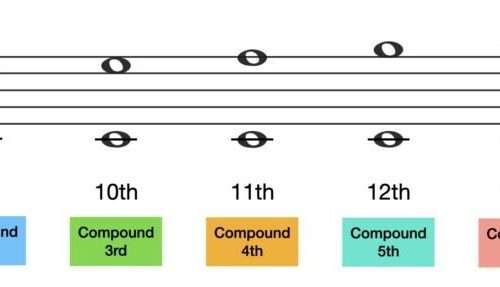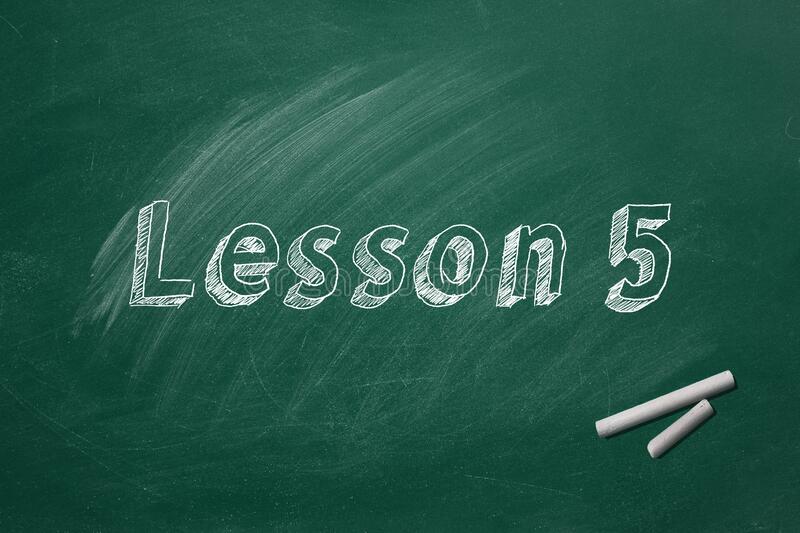
Lesson 5
Contents
- What is musical ear
- Types of musical ear
- How to develop an ear for music with the help of solfeggio
- How to develop an ear for music through exercise
- How to develop an ear for music with the help of special software
- How to develop an ear for music online
- How to develop an ear for music with the help of musical observation
- How to develop an ear for music by playing a musical instrument
- How to develop an ear for music in children and with children
- Lesson comprehension test
An ear for music, as you saw from the material of the previous lesson, is necessary not only for musicians, but also for everyone who works with the magical world of sounds: sound engineers, sound producers, sound designers, video engineers who mix sound with video.
Therefore, the question of how to develop an ear for music is relevant for many people.
The lesson contains specific techniques and exercises that do not require special technical equipment and which can be applied right now.
You have already understood that we cannot do without a musical ear, so let’s get started!
What is musical ear
Ear for music is a complex concept. This is a set of abilities that allow a person to perceive musical sounds and melodies, evaluate their technical characteristics and artistic value.
In previous lessons, we have already found out that musical sound has many properties: pitch, volume, timbre, duration.
And then there are such integral characteristics of music as the rhythm and tempo of the movement of the melody, harmony and tonality, the way of connecting melodic lines within one piece of music, etc. So, a person with an ear for music is able to appreciate all these components of a melody and hear every musical instrument that took part in the creation of a complete work.
However, there are many people who are far from music, who cannot identify all sounding musical instruments, simply because they do not even know their names, but at the same time they are able to quickly remember the course of the melody and reproduce its tempo and rhythm with a minimal singing voice. What’s the matter here? But the fact is that ear for music is not at all some kind of monolithic concept. There are many types of musical hearing.
Types of musical ear
So, what are these varieties of musical ear, and on what grounds are they classified? Let’s figure it out!
The main types of musical ear:
| 1 | Absolute – when a person is able to accurately determine the note by ear and memorize it, without comparing it with any other. |
| 2 | Interval harmonic – when a person is able to recognize the intervals between sounds. |
| 3 | Chord harmonic – when the ability to recognize harmonic consonances from 3 or more sounds is expressed, i.e. chords. |
| 4 | Internal – when a person can, as it were, “hear” music within himself, without an external source. This is how Beethoven composed his immortal works when he lost the ability to hear the physical wave vibrations of the air. People with well-developed inner hearing have developed the so-called pre-hearing, i.e. mental representation of the future sound, note, rhythm, musical phrase. |
| 5 | Modal – is closely related to the harmonic and implies the ability to recognize major and minor, other relationships between sounds (gravitation, resolution, etc.) To do this, you need to remember lesson 3, where it was said that the melody cannot be must end on a stable one. |
| 6 | sound pitch – when a person clearly hears the difference between notes in a semitone, and ideally recognizes a quarter and one eighth of a tone. |
| 7 | Melodic – when a person correctly perceives the movement and development of a melody, whether it “goes” up or down and how big “leaps” or “stands” in one place. |
| 8 | intonation – a combination of pitch and melodic hearing, which allows you to feel the intonation, expression, expressiveness of a musical work. |
| 9 | Rhythmic or metrorhythmic – when a person is able to determine the duration and sequence of notes, understands which of them is weak and which is strong, and adequately perceives the speed of the melody. |
| 10 | timbre – when a person distinguishes the timbre coloring of a musical work as a whole, and its constituent voices and musical instruments separately. If you distinguish the timbre of a harp from the timbre of a cello, you have timbre hearing. |
| 11 | Dynamic – when a person is able to determine even the slightest changes in the strength of sound and hear where the sound grows (crescendo) or dies down (diminuendo), and where it moves in waves. |
| 12 | Textured. |
| 13 | architectonic – when a person distinguishes between the forms and patterns of the structure of a musical work. |
| 14 | Polyphonic – when a person is able to hear and remember the movement of two or more melodic lines within a piece of music with all the nuances, polyphonic techniques and ways of connecting them. |
Polyphonic hearing is considered the most valuable in terms of practical utility and the most difficult in terms of development. A classic example that is given in almost all materials on polyphonic hearing is an example of Mozart’s truly phenomenal hearing.
At the age of 14, Mozart visited the Sistine Chapel with his father, where, among other things, he listened to the work of Gregorio Allegri Miserere. The notes for Miserere were kept in the strictest confidence, and those who leaked the information would face excommunication. Mozart memorized by ear the sound and connection of all the melodic lines, which included many instruments and 9 voices, and then transferred this material to notes from memory.
However, beginner musicians are much more interested in perfect pitch – what it is, how to develop it, how long it will take. Let’s just say that absolute pitch is good, but it brings a lot of inconvenience in everyday life. The owners of such a hearing are irritated at the slightest unpleasant and inharmonious sounds, and given that there are a great many of them around us, it is hardly worth envying them so much.
The most radically tuned musicians claim that perfect pitch in music can play a cruel joke with its owner. It is believed that such people are not able to appreciate all the delights of arrangements and modern adaptations of the classics, and even an ordinary cover of a popular composition in a different key annoys them too, because. they are already accustomed to hearing the work only in the original key and simply cannot “switch” to any other.
There is another interesting look at the varieties of musical ear. So, some researchers believe that, by and large, there are only 2 types of musical ear: absolute and relative. We, in general, have dealt with absolute pitch, and it is proposed to refer to the relative pitch all the other varieties of musical pitch considered above [N. Kurapova, 2019].
There is some equity in this approach. Practice shows that if you change the pitch, timbre or dynamics of a musical work – make a new arrangement, raise or lower the key, speed up or slow down the tempo – the perception of even a long-familiar work is noticeably difficult for many people. Up to the point that not everyone can identify it as already familiar.
Thus, all varieties of musical ear, which can be conditionally united by the term “relative ear for music”, are closely interconnected. Therefore, for a full-fledged perception of music, you need to work on all aspects of musical hearing: melodic, rhythmic, pitch, etc.
One way or another, work on the development of an ear for music always leads from simple to complex. And first they work on the development of interval hearing, i.e. the ability to hear the distance (interval) between two sounds. But let’s talk about everything in order.
How to develop an ear for music with the help of solfeggio
In a nutshell, for those who want to develop an ear for music, there is already a universal recipe, and this is the good old solfeggio. Most solfeggio courses begin with learning musical notation, and this is completely logical. To hit the notes, it is desirable to understand where to aim.
If you are not sure that you have learned lessons 2 and 3 well, watch a series of 3-6 minute training videos on the specialized Solfeggio music channel. Perhaps a live explanation suits you better than a written text.
Lesson 1. Musical scale, notes:
Lesson 2. Solfeggio. Stable and unstable steps:
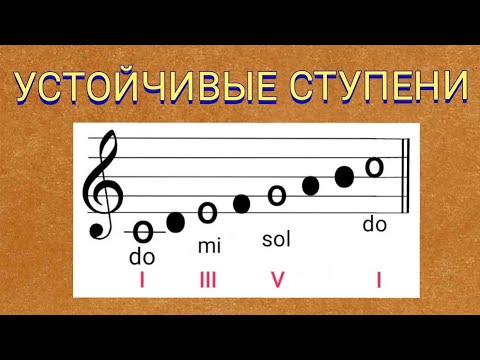

Watch this video on YouTube
Lesson 3


Watch this video on YouTube
Lesson 4. Minor and major. Tonic, tonality:
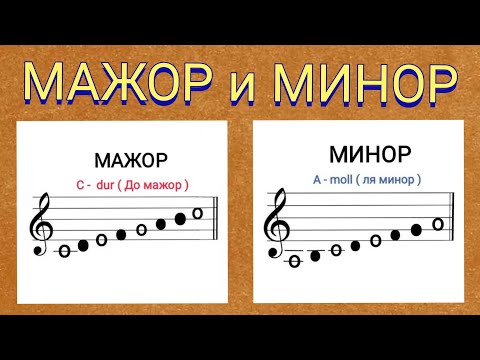

Watch this video on YouTube
If you are quite confident in your knowledge, you can take on more complex material. For example, immediately memorize the sound of intervals using famous musical compositions as an example, and at the same time hear the difference between dissonant and consonant intervals.
We will recommend a useful video to you, but first we will make a big personal request to rock lovers not to be indignant that the lecturer is clearly not friends with rock music and is not a fan of fifth chords. In everything else, he very intelligent teacher
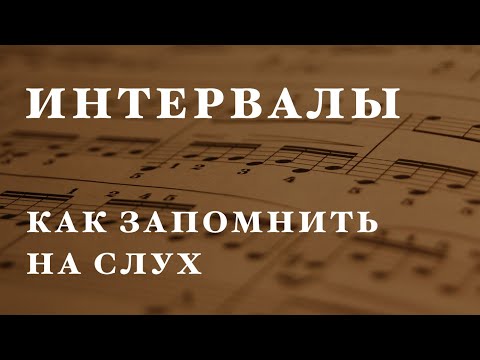

Watch this video on YouTube
Now, in fact, to the exercises for the development of musical ear.
How to develop an ear for music through exercise
The best musical ear develops in the process of playing a musical instrument or imitator. If you have carefully completed all the tasks of lesson number 3, then you have already taken the first step towards developing an ear for music. Namely, they played and sang all the intervals studied during lesson No. 3 on a musical instrument or the Perfect Piano piano simulator downloaded from Google Play.
If you haven’t done it yet, you can do it now. We remind you that you can start with any key. If you play one key twice, you get an interval of 0 semitones, 2 adjacent keys – a semitone, after one – 2 semitones, etc. In the Perfect Piano settings, you can set the number of keys convenient for you personally on the tablet display. We also recall that it is more convenient to play on a tablet than on a smartphone, because. The screen is larger and more keys will fit there.
Alternatively, you can start with the C major scale, as is customary in music schools in our country. This, as you remember from previous lessons, is all white keys in a row, starting with the note “do”. In the settings, you can choose the key designation option according to scientific notation (small octave – C3-B3, 1st octave – C4-B4, etc.) or a simpler and more familiar do, re, mi, fa, sol, la, si , do. It is these notes that need to be played and sung in succession in ascending order. Then the exercises need to be complicated.
Independent exercises for musical ear:
| 1 | Play and sing the C major scale in reverse order do, si, la, sol, fa, mi, re, do. |
| 2 | Play and sing all white and black keys in a row in forward and reverse order. |
| 3 | Play and sing do-re-do. |
| 4 | Play and sing do-mi-do. |
| 5 | Play and sing do-fa-do. |
| 6 | Play and sing do-sol-do. |
| 7 | Play and sing do-la-do. |
| 8 | Play and sing do-si-do. |
| 9 | Play and sing do-re-do-si-do. |
| 10 | Play and sing do-re-mi-fa-sol-fa-mi-re-do. |
| 11 | Play and sing white keys through one in forward and reverse order do-mi-sol-si-do-la-fa-re. |
| 12 | Play through pauses in increasing do, sol, do, and sing all the notes in a row. Your task is to accurately hit the “G” note with your voice when the turn comes to it, and to the “C” note when the turn comes to it too. |
Further, all these exercises can be complicated: first play the notes, and only then sing them from memory. To make sure that you hit the notes exactly, use the Pano Tuner application, for which you allow it access to the microphone.
Now let’s move on to an exercise game where you will need an assistant. The essence of the game: you turn away from the instrument or simulator, and your assistant presses 2, 3 or 4 keys at the same time. Your task is to guess how many notes your assistant pressed. Well, if you can also sing these notes. And it’s great if you can tell by ear what the notes are. For a better understanding of what I’m talking about, see how did you play this game professional musicians:


Watch this video on YouTube
Due to the fact that our course is devoted to the basics of music theory and musical literacy, we do not suggest that you guess by 5 or 6 notes, as the pros do. However, if you work hard, over time you will be able to do the same.
If you want to deal with hitting the notes once and for all, understand how vocalists can train this skill, and are ready to work hard for this, we can recommend you a full-fledged lesson lasting an academic hour (45 minutes) with detailed explanations and practical exercises from a musician and teacher Alexandra Zilkova:
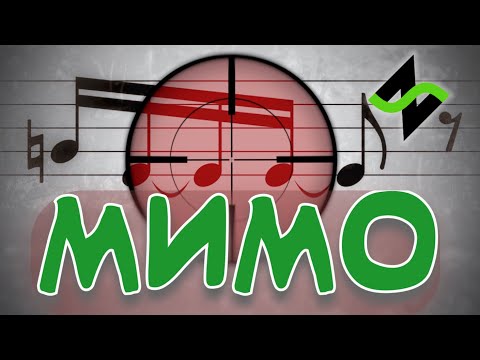

Watch this video on YouTube
In general, no one claims that everything will turn out easily and immediately, but practice shows that on your own, without the help of professionals, you can spend much more time on elementary things than the usual academic 45 minutes of a lecture.
How to develop an ear for music with the help of special software
In addition to the traditional methods of developing an ear for music, today you can resort to the help of special programs. Let’s talk about some of the most interesting and effective.
Perfect pitch
This is, firstly, the application “Absolute Ear – Ear and Rhythm Training”. There are special exercises for musical ear, and before them – a brief digression into the theory in case you forgot something. Here are the main application sections:


Results are scored on a 10-point system and can be saved and compared to future results that you will show as you work on your musical ear.
Hearing absolute
“Perfect Pitch” is not the same as “Perfect Pitch”. These are completely different applications, and Absolute Hearing allows you to choose even a musical instrument, under which you would like to train:


It is very suitable for those who have already decided on their musical future, and for those who would like to try the sound of different instruments, and only then choose something to their liking.
Functional Ear Trainer
Secondly, there is the Functional Ear Trainer application, where you will be offered to train your ear for music according to the method of composer, musician and programmer Alain Benbassat. He, being a composer and musician, quite sincerely does not see anything terrible if someone has difficulty memorizing notes. The app lets you just guess and press the button with the sound you just heard. You can read about the method, choose basic training or melodic dictation:
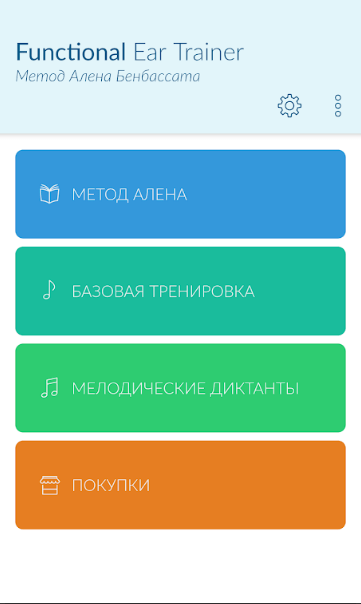

In other words, here it is proposed to first learn to hear the difference between notes, and only then memorize their names.
How to develop an ear for music online
In addition, you can train your ear for music directly online without downloading anything. For example, on Music Tests you can find a lot interesting tests, developed by American physician and professional musician Jake Mandell:


Jake Mandell Tests:
As you understand, this kind of tests not only check, but also train your musical perception. Therefore, it is worth going through them, even if you doubt the results in advance.
Equally interesting and useful for the development of musical ear is the online test “What instrument is playing?” There it is proposed to listen to several musical passages, and for each choose 1 of 4 answer options. Among other things, there will be a banjo, a pizzicato violin, an orchestral triangle and a xylophone. If it seems to you that such tasks are a disaster, then twhich answer option there is also:


After studying the tips and tricks for developing an ear for music, you probably realized that there are a whole ocean of opportunities for this, even if you don’t have a musical instrument or time to sit at a computer for a long time. And these possibilities are all those sounds and all the music that sounds around us.
How to develop an ear for music with the help of musical observation
Musical and auditory observation is an absolutely full-fledged method of developing a musical ear. By listening to the sounds of the environment and listening to music consciously, noticeable results can be achieved. Try to guess on which note the perforator is buzzing or the kettle is boiling, how many guitars accompany the vocals of your favorite artist, how many musical instruments take part in the musical accompaniment.
Try to learn to distinguish between harp and cello, 4-string and 5-string bass guitar, backing vocals and double-tracking by ear. To clarify, double-tracking is when vocals or instrument parts are duplicated 2 or more times. And, of course, learn to distinguish by ear the polyphonic techniques that you learned in lesson number 4. Even if you do not achieve phenomenal hearing from yourself, you will learn to hear much more than you hear now.
How to develop an ear for music by playing a musical instrument
It is very useful to consolidate your observations practically. For example, try to pick up the heard melody from memory on a musical instrument or imitator. This, by the way, is useful for the development of interval hearing. Even if you don’t know which note the melody started from, you just need to remember the up and down steps of the melody and understand the difference (interval) between adjacent sounds.
In general, if working on an ear for music is relevant to you, never rush to immediately look for chords for a song you like. First, try to pick it up yourself, at least the main melodic line. And then check your guesses with the proposed selection. If your selection does not match the one found on the Internet, this does not mean that you did not select correctly. Perhaps someone posted their own version in a convenient tone.
To understand how correctly you have chosen, look not at the chords as such, but at the intervals between the tonics of the chords. If this is still difficult, find a song you like on the site mychords.net and “move” the keys up and down. If you have chosen the melody correctly, one of the keys will show you the chords that you heard. The site contains a ton of songs, old and new, and has simple navigation:


When you go to the page with the desired composition, you will immediately see tonality window with arrows to the right (to increase) and to the left (to decrease):


For example, consider a song with simple chords. For example, the composition “Stone” by the group “Night Snipers”, released in 2020. So, we are invited to play it on the following chords:
If we raise the key by 2 semitones, Let’s see the chords:


Thus, to transpose the key, you need to shift the tonic of each chord by the required number of semitones. For example, increase by 2, as in the example presented. If you double-check the developers of the site and add 2 semitones to each original chord, you will see, how it works:
On a piano keyboard, you simply move the fingering of a chord to the right or left by as many keys as you need, given the whites and blacks. On a guitar, when raising the key, you can simply hang a capo: plus 1 semitone on the first fret, plus 2 semitones on the second fret, and so on.
Since the notes repeat every 12 semitones (an octave), the same principle can be used when lowering for clarity. The result is this:
Please note that when we increase and decrease by 6 semitones, we come to the same note. You can easily hear it, even if your ear for music is not yet fully developed.
Next, you just have to choose a convenient fingering of the chord on the guitar. Of course, it is inconvenient to play with a capo at the 10-11th fret, so such a movement along the fingerboard is recommended solely for a visual understanding of the principle of transposing keys. If you understand and hear what chord you need in a new key, you can easily pick up a convenient fingering in any chord library.
So, for the already mentioned F-major chord, there are 23 options for how it can be played on the guitar [MirGitar, 2020]. And for G-major, 42 fingerings are offered at all [MirGitar, 2020]. By the way, if you just play them all, it will also help develop your musical ear. If you do not fully understand this section of the lesson, return to it again after you have completed Lesson 6, which is devoted to playing musical instruments, including the guitar. In the meantime, we will continue to work on the musical ear.
How to develop an ear for music in children and with children
If you have children, you can develop an ear for music with them while playing. Invite the children to clap or dance to the music or sing a nursery rhyme. Play Guessing Game with them: the child turns away and tries to guess by the sound what you are doing now. For example, shake the keys, pour the buckwheat into the pan, sharpen the knife, etc.
You can play the “Menagerie”: ask the child to portray how a tiger growls, a dog barks or a cat meows. By the way, meowing is one of the most popular exercises for mastering the mixed vocal technique. You can learn more about vocal techniques and techniques from our special Singing lesson as part of the Voice and Speech Development course.
And, of course, the book remains the most valuable source of knowledge. We can recommend you the book “Development of musical ear” [G. Shatkovsky, 2010]. The recommendations in this book relate mainly to working with children, but people who study music theory from scratch will also find a lot of useful tips there. Another useful methodological literature should pay attention to the manual “Musical ear” [S. Oskina, D. Parnes, 2005]. Having studied it completely, you can reach a fairly high level of knowledge.
There is also special literature for more in-depth studies with children. In particular, for the purposeful development of pitch hearing in preschool age [I. Ilyina, E. Mikhailova, 2015]. And in the book “Development of the musical ear of students of a children’s music school in solfeggio classes” you can choose songs suitable for children to learn [K. Malinina, 2019]. By the way, according to the same book, children will be able to master the basics of solfeggio in a form that is accessible to their perception. And now let’s summarize all the ways how you can develop an ear for music.
Ways to develop musical ear:
| ✔ | Solfeggio. |
| ✔ | Special exercises. |
| ✔ | Programs for the development of musical ear. |
| ✔ | Online services for the development of musical ear. |
| ✔ | Musical and auditory observation. |
| ✔ | Games with children for the development of hearing. |
| ✔ | Special Literature. |
As you have noticed, nowhere do we insist that classes for the development of musical ear should be only with a teacher or only independent. If you have the opportunity to work with a qualified music or singing teacher, be sure to take advantage of this opportunity. This will give you better control over your notes and more personalized advice on what to work on first.
At the same time, working with a teacher does not cancel independent studies. Almost every teacher recommends one of the listed exercises and services for the development of musical ear. Most teachers recommend special literature for independent reading and, in particular, the book “The Development of Musical Ear” [G. Shatkovsky, 2010].
A must have for all musicians is “Elementary Theory of Music” by Varfolomey Vakhromeev [V. Vakhromeev, 1961]. Some believe that the textbook “Elementary Theory of Music” by Igor Sposobin will be easier and more understandable for beginners [I. Sposobin, 1963]. For practical training, they usually advise “Problems and Exercises in Elementary Music Theory” [V. Khvostenko, 1965].
Choose any of the suggested recommendations. Most importantly, keep working on yourself and your musical ear. This will greatly help you both in singing and in mastering the chosen musical instrument. And remember that the next lesson of the course is devoted to musical instruments. In the meantime, consolidate your knowledge with the help of the test.
Lesson comprehension test
If you want to test your knowledge on the topic of this lesson, you can take a short test consisting of several questions. Only 1 option can be correct for each question. After you select one of the options, the system automatically moves on to the next question. The points you receive are affected by the correctness of your answers and the time spent on passing. Please note that the questions are different each time, and the options are shuffled.
Now let’s get acquainted with musical instruments.



